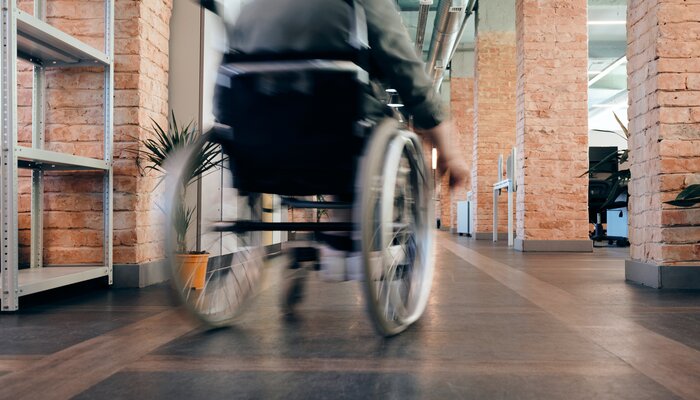The Social Security Disability Insurance (SSDI)A U.S. government program that provides financial assistance to individuals who are unable to work d... process can be complex and often daunting to navigate for the uninitiated. It is a government program that provides financial assistance to individuals who cannot work due to a disability.
The application process involves several steps including gathering of pertinent medical evidence, documentation of work history, and the completion of application forms. You have three main methods of applying for SSDI: Online, phone, and in-person application. Let’s dive into the process and what to expect.
Online Application
The most convenient method of application is online, which you can do at your own convenience wherever you are. You can access the application form and information about SSDI on the Social Security Administration's website.
Before starting the online application, make sure you have your Social Security number and proof of age available. You will also need to gather information about your medical condition and treatment, work history, and financial resources.
Be detailed in describing your disability and how it prevents you from working. Remember to also include all the names, addresses, and phone numbers of doctors, hospitals, and clinics that treated you.
The online forms can be filled out at your own pace. You can save your progress and continue later if necessary. After completion, you can review your answers and make any necessary changes before submitting. It's important to be as thorough and accurate as possible to increase your chances of being approved.
Phone Application
In case you prefer to handle your application by phone, you also have this option. You can call the Social Security Administration at their toll-free number Monday through Friday during business hours.
If you choose to apply by phone, make sure to prepare the same documents and medical information you would need for the online application.
The representative you speak with will guide you through the process and answer any questions you may have. They will also schedule a telephone interview to gather all the necessary information for your application. After your interview, you will receive a written summary of your information and a chance to make any necessary corrections before your application is submitted.
In-person Application
Finally, if you prefer a face-to-face interaction, you can apply in person. To apply at a Social Security office, you will first need to schedule an appointment.
As with the online and phone applications, be sure to prepare all necessary documents and information before your appointment. A representative will help you complete the application and answer any questions you may have.
Remember, whichever method you choose to apply, it is vital to be as open and accurate as possible about your disability and its impact on your life. These details will play a crucial role in the Social Security Administration's decision regarding your application. It may take time and require effort, but it is essential for accessing the benefits that could improve your quality of life.
Required Personal Documentation for SSDI Application
Applying for Social Security Disability Insurance (SSDI) requires thorough preparation. Among the vital steps is gathering all necessary personal documentation.
Social Security Card or Record
Having your Social Security card or a detailed record of your Social Security number is crucial. The Social Security Administration needs this information to properly process your application. If you don't have a card, you may request a replacement from the Social Security Administration or present a record of your Social Security number.
Birth Certificate or Other Proof of Age
The SSDI application also requires proof of age, and a birth certificate is often the most straightforward document for this purpose. However, if you don't have one, other age-validating documents, like your passport or driver's license, may meet this requirement.
Citizenship or Legal Resident Status Records
Applicants must present documentation that verifies their US citizenship or legal resident status. A U.S. passport or a birth certificate often suffice for proving citizenship. For legal resident status, one can produce a Permanent Resident Card (Green Card) or Registration Card.
Required Medical Documentation for SSDI Application
Applying for SSDI also necessitates providing a comprehensive picture of your medical condition.
Medical Records From Your Doctors
Your medical records form the foundation of your application. Detailed documents from your health providers – such as hospital records, clinic notes, and diagnosis statements - are vital. This evidence should show your medical history, the extent of your disability, how it affects your daily life, and your prognosis.
Recent Test Results
Test results that underpin your medical condition are also important to be included. The SSA will consider X-rays, MRIs, blood work results, psychological evaluations, or other pertinent examinations.
Record of Medication
The SSA also considers medications relevant to your disability. Include a document listing the names, dosages, and frequency of all medications you're taking, along with their effects on your condition.
Required Work-Related Documentation for SSDI Application
The SSA also investigates your work history to measure the impact of your disability on your capacity to work.
-
Income Tax Return: Previous years' income tax returns are required to show your earnings history. They assist the SSA to determine if you meet the income criteria for SSDI.
-
W-2 Forms: In addition to tax returns, you should present all W-2 forms from the past two years. These forms supply additional evidence of your income and employment history.
-
Proof of Self-employment Income: If you're self-employed, you should provide extensive documentation of that income. This could include business tax returns, profit and loss statements, and financial records.
Additional Required Documents for Specific Applicant Types
Certain application scenarios may require additional documents.
Requirements for Military Personnel
Military personnel may need to provide documents like the DD Form 214 or other proof of military service. Additionally, documents detailing any disability-related military benefits and related medical records could be required.
Requirements for Children
If you're applying on behalf of a child, the SSA needs additional documents. You'll need to provide school records, if applicable, and medical documentation that clear-cut details the child's condition, treatment, and functional limitations.
Requirements for Non-citizens
Non-citizens applying for SSDI must offer proof of their legal immigrations. This might include the Permanent Resident Card, Temporary Resident Card, or Employment Authorization Document. Additionally, the relevant medical and work documentation is compulsory.
Review and Follow-up of SSDI Application
The process of applying for Social Security Disability InsuranceA form of insurance that provides income to individuals who are unable to work due to a disability. (SSDI) is generally slow and tedious, requiring numerous forms and potentially multiple levels of review. Therefore, applicants are advised to keep a track of their application status during this period.
The review and monitoring of the SSDI application comprises several crucial steps, being informed about which can help the applicant increase their chances of approval. These important steps include learning how to check the status of the SSDI application, understanding the review process, and knowing how to appeal if the application is denied.
How to Check SSDI Application Status
After you have submitted your SSDI application, it is important to consistently track the application progress. The Social Security Administration (SSA) allows applicants to check their SSDI application status by phone or online.
To check your status online, you need to first create a 'my Social Security' account on the SSA’s official website. After logging in, you can immediately view the ‘Benefits & Application Status,’ which indicates the current status of your application.
When checking status over the phone, you can call the SSA's toll-free number and talk to a representative. They'll ask for your social security number and other identifying details before revealing the status of your claim. However, it is key to note that the phone lines are typically busy, and reaching an SSA agent might take a while.
Understanding the Review Process
Understanding the SSDI application review process is essential to foresee what you might need to handle during the process. Once the SSDI application is submitted, SSA sends it to the Disability Determination Services (DDS) in your state. The DDS is responsible for developing medical evidence and rendering the initial decision of whether you are disabled under SSA rules.
The DDS may reach out to the medical professionals outlined in your application to request additional information. It's important that you keep your medical team informed about your application so that they can respond promptly. The DDS also might ask you for additional interviews or examinations.
Appealing a Denied SSDI Application
The harsh reality is that many SSDI applications are initially denied. But don’t lose hope because it's not the end of the road. You have the right to appeal the decision.
The appeal process for socially disabled individuals includes four main stages: reconsideration, hearing by an Administrative Law Judge (ALJ), review by the Appeals Council, and a federal court review.
Reconsideration involves a complete review of the claim by someone other than the person who made the original decision. If your claim is again denied, you can then request a hearing with an ALJ, who will evaluate your case afresh. If denied at this level too, you may appeal the decision to the Social Security’s Appeals Council and, finally, to the federal court.
In each stage, legal representationThe way people with disabilities are depicted in media, culture, and politics, often influencing pub... by a disability attorney may prove highly beneficial. They can guide you through the complexity of the process, ensuring all the requisite paperwork is accurately completed and compelling medical evidence is presented in your favor of your disability.
Frequently Asked Questions
1. What documents do I need to apply for Social Security Disability Insurance (SSDI)?
When applying for SSDI, individuals must provide their Social Security number, birth certificate, medical evidence of their disability, work history, W-2 forms, and doctors' reports.
2. Are medical reports necessary for the SSDI application process?
Yes, when applying for SSDI, medical reports or evidence proving the presence and severity of the disability are vital. They aid in determining eligibility based on the Social Security Administration's criteria.
3. What kind of medical evidence is expected for SSDI application?
The Social Security Administration requires comprehensive medical evidence, including doctor's reports, lab and test results, treatment records, and any other relevant information documenting the disability.
Conclusion
In conclusion, the right documentation is essential to ensure a smooth SSDI application process. Thoroughly gathering and preparing all necessary records will significantly boost your chances of a successful claim. Remember, your preparedness today paves the way for a smoother journey towards obtaining your SSDI benefits.
Explore disability and self-employment when applying for SSDI benefits from our blogs at Disability Help today.






